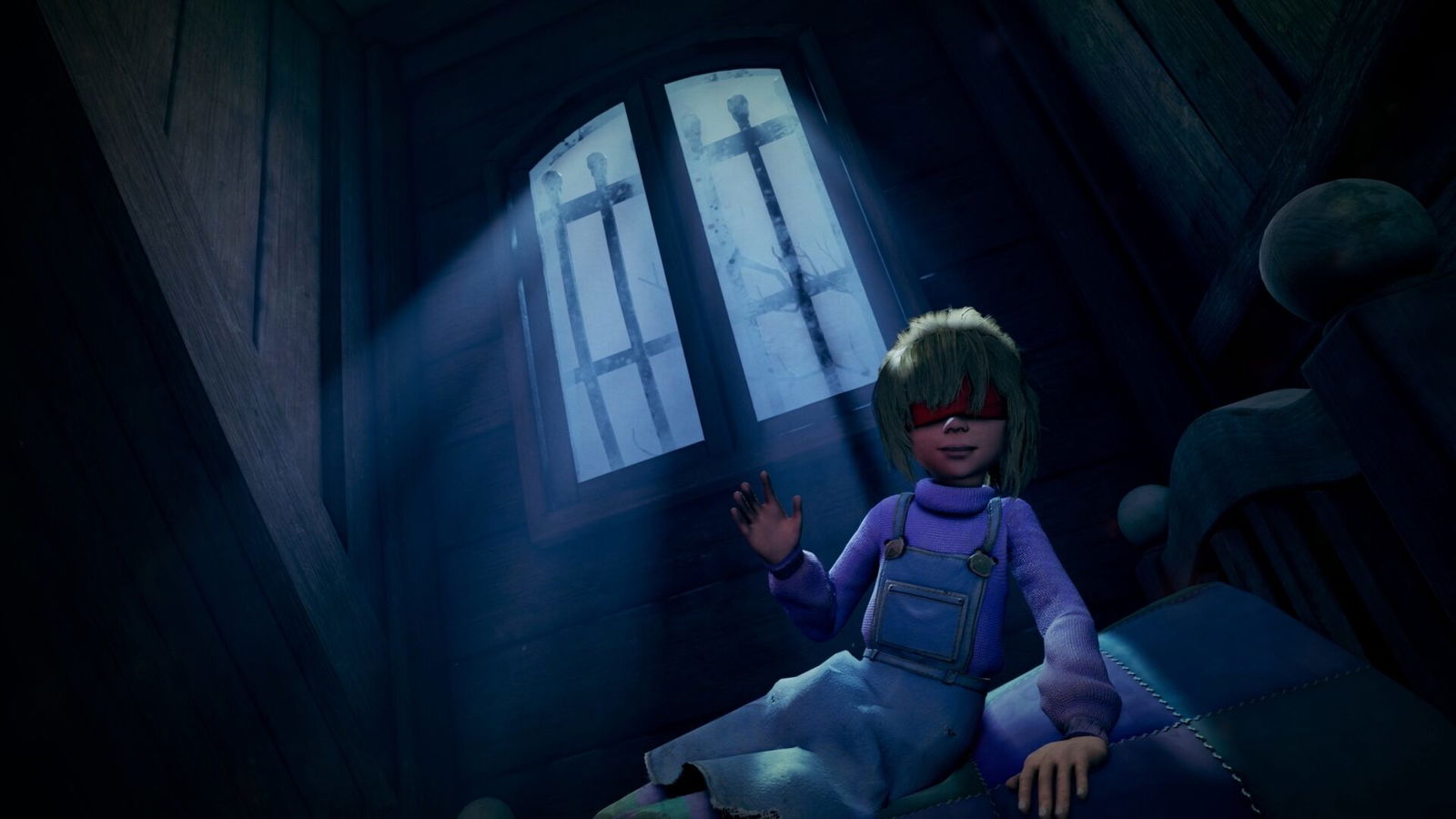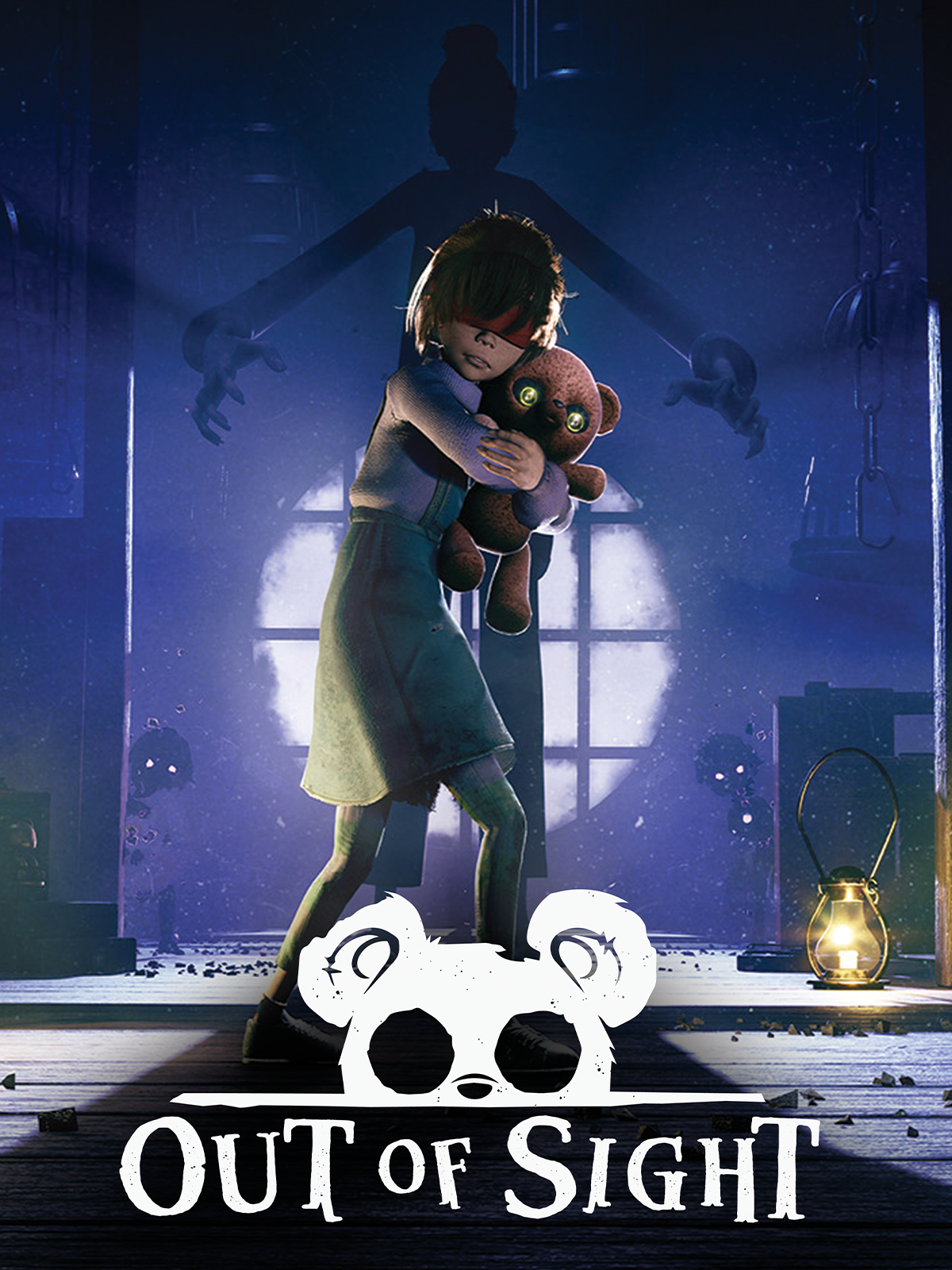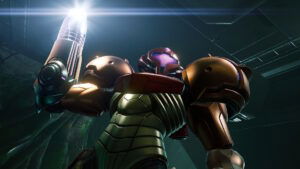Out of Sight is a second-person horror adventure about a blind girl named Sophie who must escape a haunted house before her elderly captors can subject her to a mysterious dark ritual. By some occult miracle, Sophie becomes psychically linked to her teddy bear, allowing her to see her grim surroundings through its eyes.
Together, Sophie and Teddy explore the creaking halls of the mansion, solve puzzles, and outwit their captors. The gameplay is light but engaging, drawing inspiration from modern classics like Outlast and Among the Sleep and golden-era PS1 survival horror. At the same time, a clever new perspective-shifting mechanic adds a fresh twist to the familiar genre conventions.
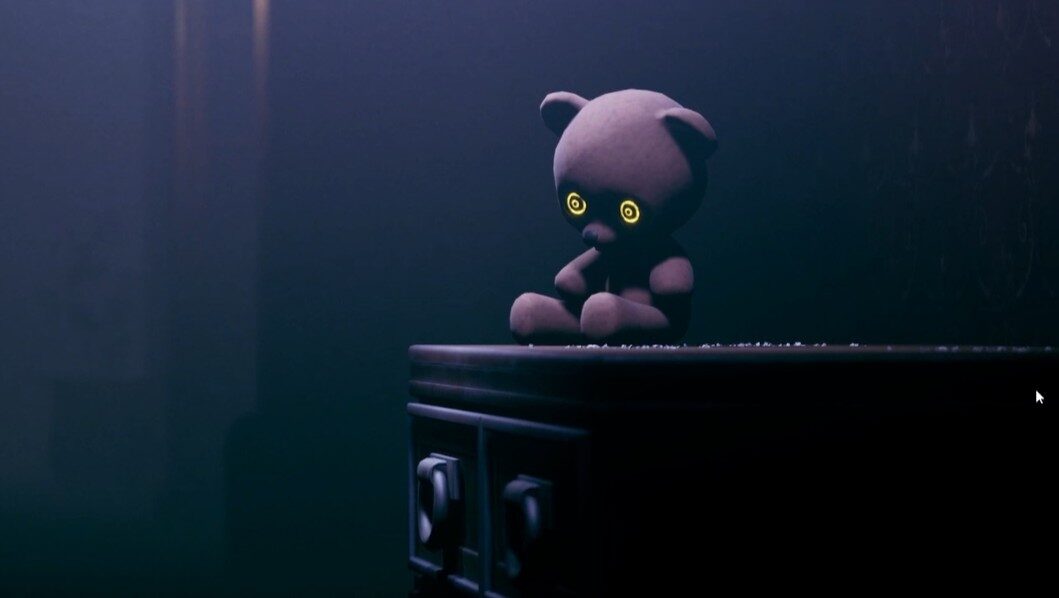
The narrative is simple but effective horror that uses a cheatsheet of tropes to craft a story that’s grim on the surface, and bone-chilling just below. It’s a classic fable of a child in peril, told with an innocent, storybook-like art style that belies the pitch-black atmosphere that haunts every frame. Out of Sight may be light on dialogue, but its visual storytelling is ever-present and the game’s greatest strength.
Children’s rooms and play areas are colored with soft pastels, and strewn with toys, but in shadowy corners, almost out of sight, hang child-sized cages, chains, and shackles. Peeking through a cracked door in one of the mansion’s many dark hallways, I spotted a snare pole and an animal carrier—props that give deeply unsettling insight into how Sophie ended up here, and the macabre collection of eyeless child portraits hanging throughout the mansion are a stark reminder that she is just one of many. Seeing all this while “Mother,” one of our captors, gently hums a lullaby in the next room, gave me goosebumps that lingered far longer than Out of Sight’s three-hour runtime.
The story emphasizes atmosphere over narrative; to that end, it’s effective to a fault. I loved that it didn’t explicitly say how Sophie ended up here, what happened to her eyes, how many victims came before her, or even why our teddy bear has object-breaking psychokinetic powers, but the story’s underlying mystery sometimes feels superficial and rushed.
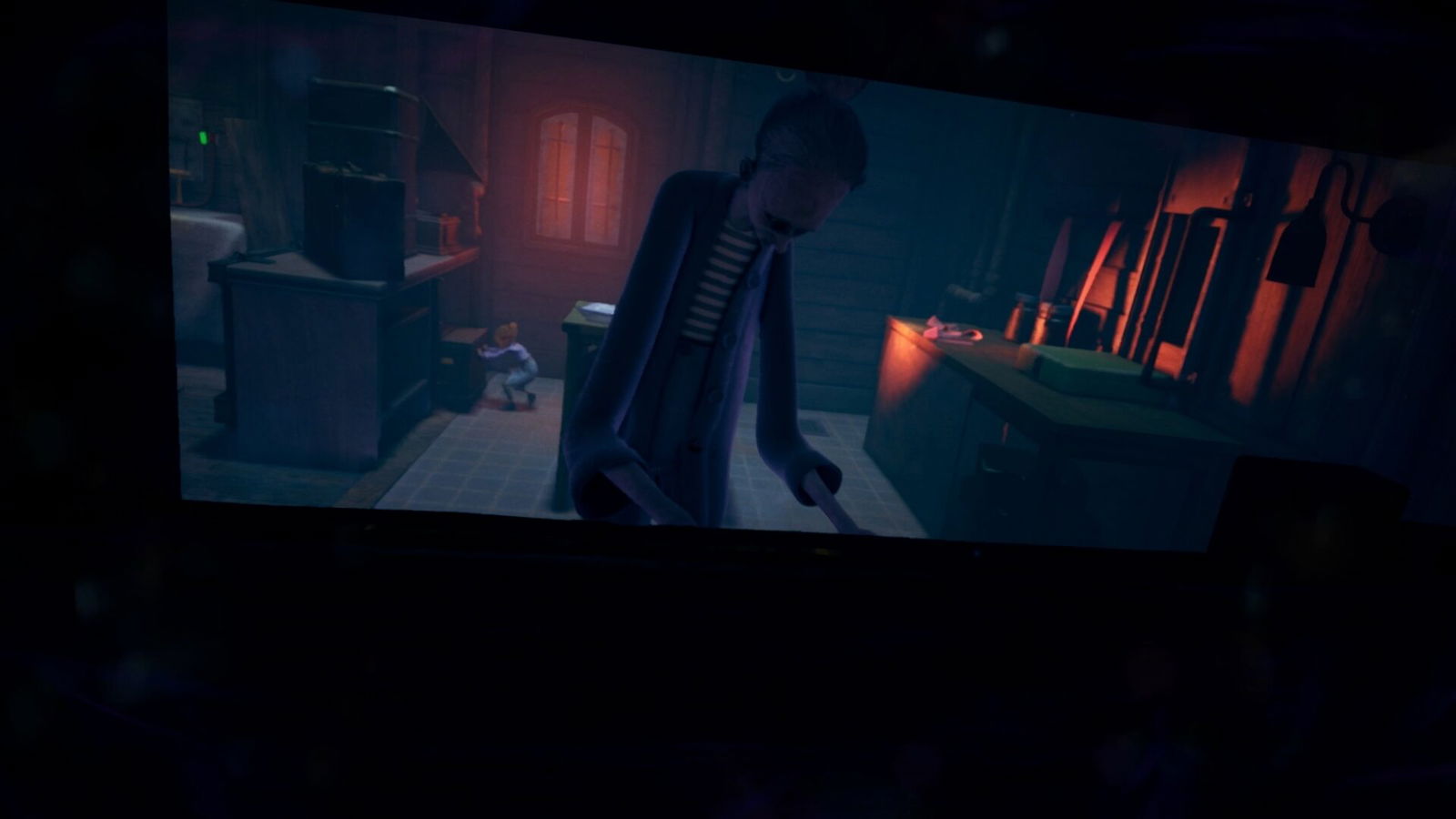
It’s most noticeable in the opening scene. Sophie realizes that Teddy has somehow gained the power of sight—and that she can see through his eyes—but she doesn’t seem particularly curious or bewildered by this magical turn of events. Instead, she picks him up and immediately makes a break for it.
Sophie talks to her teddy bear like any kid would, but being psychically linked doesn’t seem to change their relationship. Granted, I admit I might be overthinking the characters in a fable. Still, the one-way banter during the first-person sections left me wondering why Sophie wasn’t even a little impressed that her plushie might be a god.
“Out of Sight may be light on dialogue, but its visual storytelling is ever-present and the game’s greatest strength.”
But that’s a minor gripe, and one that’s easy to overlook given everything Out of Sight offers. The story has everything a horror fan could ask for: a haunted house, ghost kids, spooky paintings, psychokinesis, English accents, and the twisted minds—and bodies—of the elderly.
There’s something about being chased by grotesque old people through shadowy, unfamiliar halls that bypasses conscious thought and drills straight into the reptilian brain. I did have cultist grandparents who lived in a creaky old house, so maybe that’s just me, but Out of Sight is undeniably well-crafted horror.
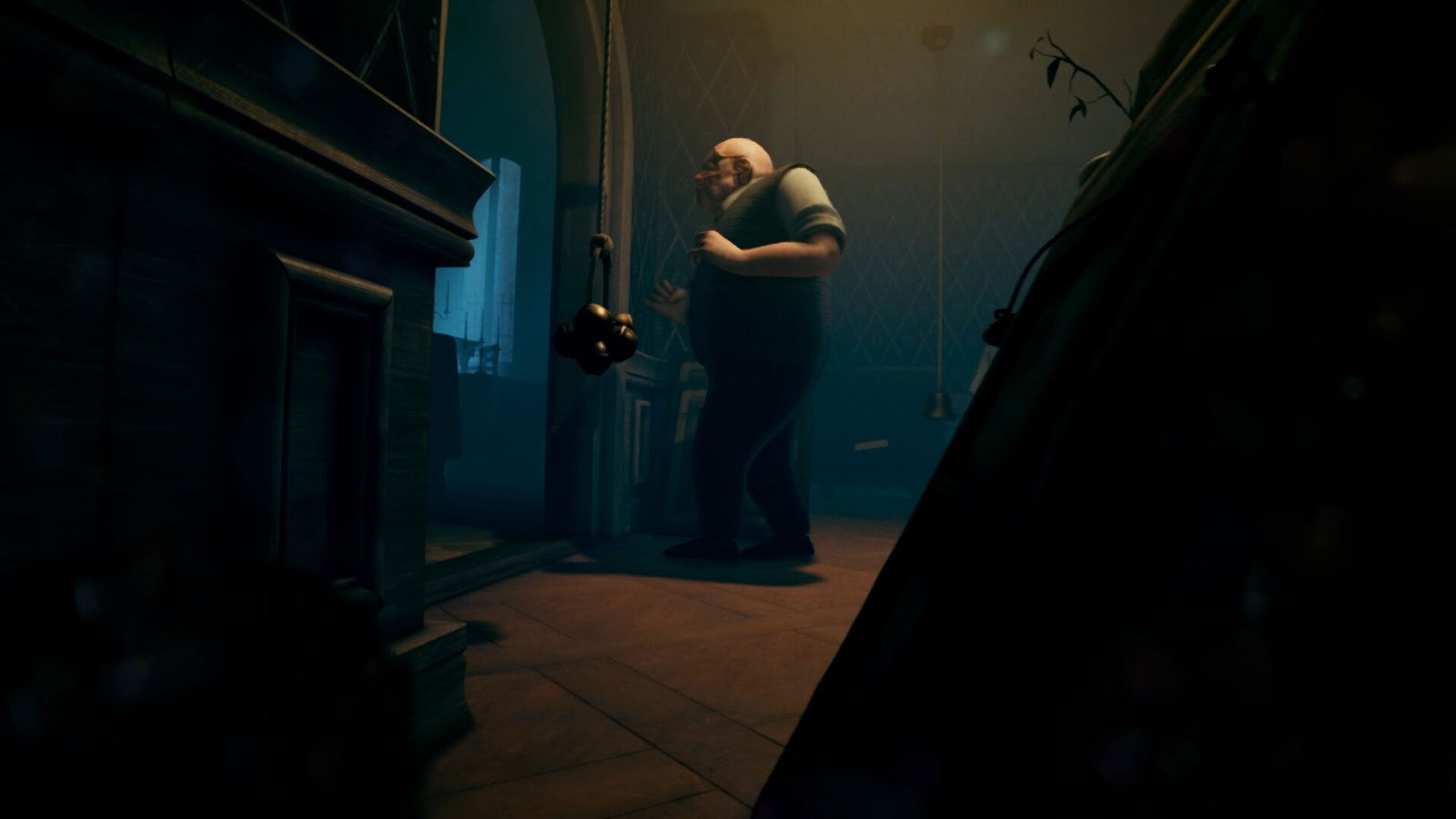
The gameplay, on the other hand, is serviceable but light. The core loop consists of exploring the halls and holes of the mansion through a first-person bodycam-like perspective, as well as third-person puzzling and platforming. For the latter, Sophie needs to place Teddy somewhere with a good view of the room, freeing her to shuffle furniture around and create climbable paths around obstacles.
Teddy’s head can pan slightly to change the view, but its range of motion is limited. He functions more like a locked-down camera, reminiscent of old-school Resident Evil—complete with tank controls. Even the layout and structure of the puzzles feel like a retro throwback, though a little simpler by comparison.
“Out of Sight is a tightly crafted indie horror experience that understays its welcome.”
In terms of difficulty, Out of Sight falls closer to the more recent (and excellent) Fear the Spotlight. Like that game, it suffers from a lack of variety and has a difficulty curve that’s more of a gentle bump than a consistent ramp. Within the first 20 minutes, Out of Sight has introduced most of the mechanics you’ll need, and from there, each room is only slightly more complex than the last, though sometimes new rooms feel less like puzzles and more like a series of inconveniences to take care of before you’re free to move on.
In the later sections, the game introduces some light time constraints and stealth segments, but it would’ve been great to see more of them. The placable camera is a stroke of creative genius that feels destined to become a staple of bodycam horror, but here, it could have been used with a bit more complexity and freedom.
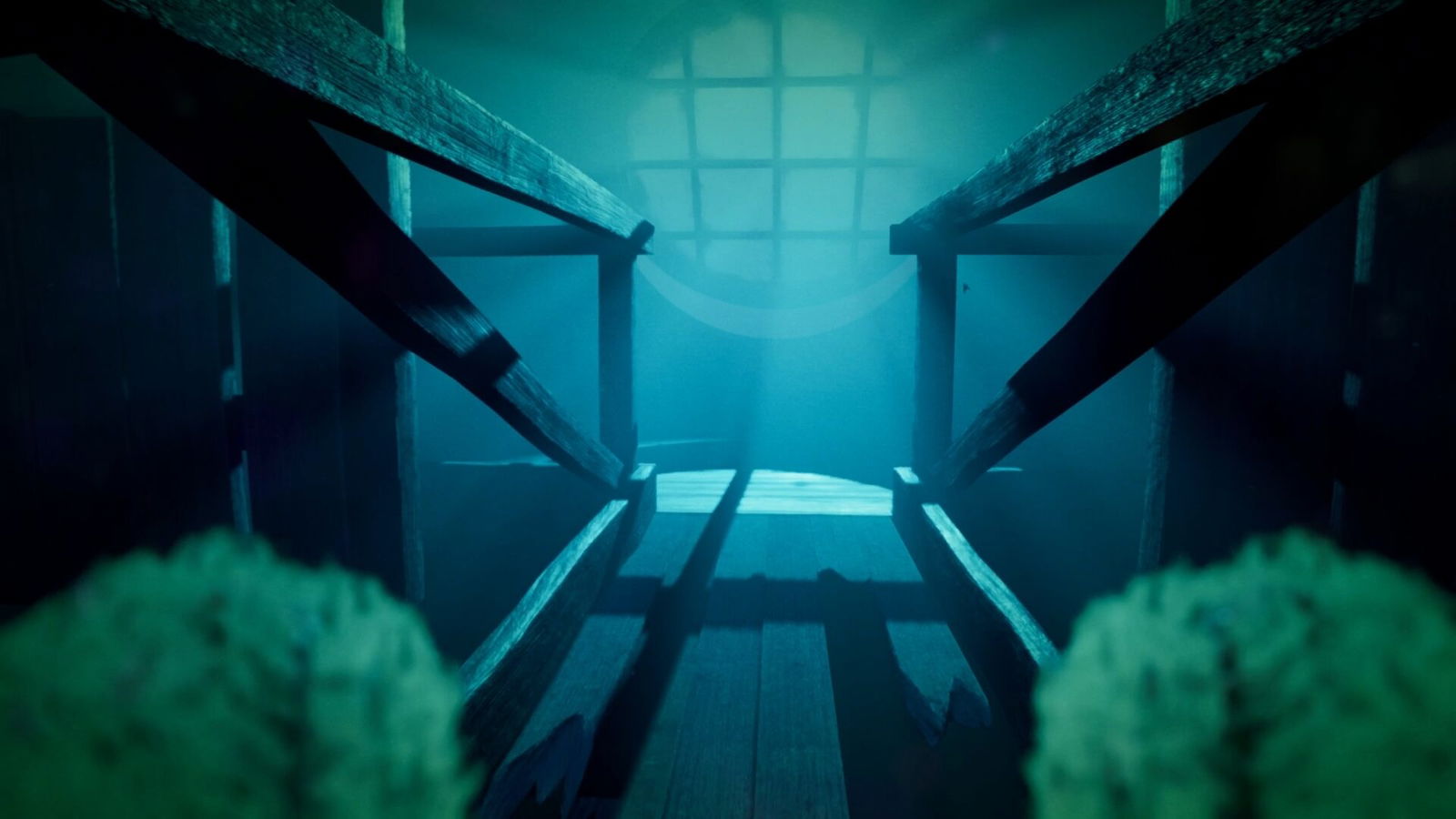
There are also a few standout chase sequences where Teddy ends up in the hands of a pursuer, effectively turning the camera against you. These were by far the tensest moments in the game—and a perfect showcase of the creative potential that comes from experimenting with perspective.
Out of Sight is a tightly crafted indie horror experience that understays its welcome. The story doesn’t hinge on twists or reveals, but it does come to a satisfying and ominous conclusion. The gameplay is light on challenge, but rich in atmosphere, and its perspective-shifting mechanic puts a fresh spin on familiar horror conventions. Whether you’re a longtime fan of the genre or just looking for a chilling way to spend a few hours alone in the dark, Out of Sight is absolutely worth your time.
